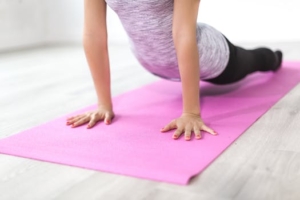7 different ways your training can create the healthier lifestyle you want
Half marathons are extremely popular within the running community. Every day, more people start running as a way to create a healthier lifestyle. Consistency is key if half marathon training is to become a factor in reaching your goal of having a healthier lifestyle. Even if you spend 12-18 weeks training, the consistency of your training plan will naturally lead you to a healthier lifestyle. Yes, you have to hydrate, get enough sleep, and eat right. That’s what will fuel your body during training. Doing that effectively will provide you with what you need during your half marathon training and factor into your healthier lifestyle. Below are 7 different ways training for 13.1 miles can create the healthier lifestyle you want.
Improve cardiovascular capacity

Your stamina will improve as your mileage increases.
Your cardiovascular capacity will become more efficient as your miles increase during your training. Cardiovascular capacity is basically your body’s ability to deliver oxygen to your muscles. This is vital to your growth as a runner! As your body gets better at this, you’ll be able to cover longer distances. During your build-up, that tough 6-mile run will become just another number during your longer runs down the road. Building up your stamina coincides with your increase in mileage, which will help on race day.
Burn calories
Once you get into the groove and start covering long distances regularly, your body’s metabolism rate will improve. New runners also burn more calories than veteran runners because they’re working harder. Don’t forget to fuel your body with a well-balanced diet and regularly hydrate. Burning calories is directly linked to the next benefit, weight loss. But you have to burn more than you take in! That’s why eating healthy foods and hydrating effectively is the foundation to a healthier lifestyle.
Lose weight

You’ll lose weight during your training if you follow your plan and eat healthily.
If you eat properly, hydrate effectively, and stick to your training plan, weight loss will occur. This could also help you become a better and more efficient runner. The less weight you run with, the easier it will be for your body to run. Some runners actually do the opposite and wear weighted vests. This makes their run or workout more difficult, helping them become stronger. Your metabolism, a balanced diet, and consistent routine are all crucial to losing weight and establishing a healthier lifestyle.
Create structure
Finding the right balance in one’s life isn’t simple these days, especially with work, family, friends, travel, and leading a healthier lifestyle. Once you decide to train for a half marathon, you’ll need to fit that into your busy schedule. Figure out what works best for you, build your routine, and you’ll develop a natural schedule. All you need to do is be smart and tweak your lifestyle around this schedule. If you’re a morning person, knock out your run before work. Skip that happy hour and fast food and eat a healthy meal and go to bed early instead. If you have kids, take them with you. All of these little changes will create your training structure.
Better your mental health

Running can reduce your stress and anxiety levels.
Life, work, kids, unnecessary drama, and uncontrollable external factors can all increase stress and anxiety. This could lead to poor eating, drinking too much, and a lack of sleep. Running helps reduce stress and anxiety which in turn helps you stay on track. Solidifying your routine, strengthening your body, and eating well can make you fit and improve your mental health. Think of it as a cycle
- you build a routine, eat right, and sleep well so you can train
- your training can help reduce stress and anxiety
- you reduce stress and anxiety so you can stay on track
- repeat!
Join the running community
There are running groups and clubs just about everywhere. Some are free, some charge a monthly fee for coaching and training. Give them a try until you find the one(s) that work best for you. They could help dictate your schedule, introduce you to new people, and get advice from veteran runners. As you get more comfortable, you’ll meet new people and slowly become a part of your running community.
Boost immunity
Better metabolism, improved stamina, and increased lung capacity are health benefits that can lead to an improved immune system. This could help your body recover from runs faster, make you less susceptible to illness, and further your healthier lifestyle. If you’re sick you won’t be able to run or workout until you’re better. Having an immune system that’s in tip-top shape will keep you on track and in your healthier lifestyle routine.
Running has many benefits that can lead to a healthier lifestyle. Settle on your routine and stick with it. Eat right, hydrate effectively, and get enough sleep. All of these actions are connected to your training and can lead to a healthier lifestyle. All of this can benefit your mental, physical, and emotional well-being.










